In listening to this cassette-tape series, I found it interesting that Leonard Sweet was talking about the birth of a “New Spirituality” with Rick Warren way back in 1995. Since 9/11, “New Spirituality” is the term that most New Age leaders are now using instead of “New Age Spirituality.” By simply removing the word “Age” from “New Age Spirituality,” the “New Age Spirituality” has suddenly become the “New Spirituality.” Emerging church figures like Sweet, Brian McLaren, and others are also employing the term “New Spirituality.” They use it to describe the “new” Christianity they are practicing as “New Christians” and “New Light leaders.”
By Warren B. Smith
Excerpted from A “Wonderful” Deception, pp. 104-120.“Christian” New Age Sympathizer Leonard Sweet: (Part 1)
Quantum spirituality bonds us to all creation as well as to other members of the human family. . . . This entails a radical doctrine of embodiment of God in the very substance of creation. . . . But a spirituality that is not in some way entheistic (whether pan- or trans-), that does not extend to the spirit-matter of the cosmos, is not Christian.1 —Leonard Sweet
Shortly after Deceived on Purpose was published, I came across a book titled Quantum Spirituality: A Postmodern Dialectic written by Rick Warren’s “Evangelical” colleague Leonard Sweet. Also, around the same time, I was given a cassette tape set of a presentation Sweet had done with Warren in 1995. Their recorded discussion is titled The Tides of Change and was packaged as part of an ongoing series called “Choice Voices for Church Leadership.” At the time this audio project took place, Sweet was a Christian author, Methodist minister, and the Dean of the Theological School at Drew University. According to information on the tape set, this presentation was about ministry on the emerging “new frontier.”2
[bctt tweet=”Leonard Sweet, keep in mind the Post Modern mind is promoting change. New Light or old lie?”]
Challenging pastors to make changes in their ministry to meet the emerging postmodern culture and the changing times, Sweet and Rick Warren present themselves not only as pastors but also as modern-day change agents. In their conversation together, Sweet enthusiastically remarked to Warren: “I think this is part of this New Spirituality that we are seeing birthed around us.”3
In listening to this cassette-tape series, I found it interesting that Leonard Sweet was talking about the birth of a “New Spirituality” with Rick Warren way back in 1995. Since 9/11, “New Spirituality” is the term that most New Age leaders are now using instead of “New Age Spirituality.” By simply removing the word “Age” from “New Age Spirituality,” the “New Age Spirituality” has suddenly become the “New Spirituality.” Emerging church figures like Sweet, Brian McLaren, and others are also employing the term “New Spirituality.” They use it to describe the “new” Christianity they are practicing as “New Christians” and “New Light leaders.”4 What has become clear over the last decade is that the “New Spirituality”—with its bottom line belief that God is “in” everything—is, in reality, the foundational New Age “hub” for the coming New World Religion. This panentheistic New Age/New Spirituality teaching that God is “in” everything will be the “common ground” melting pot belief that the coming New World Religion will ultimately rest upon.
In The Tides of Change, it is clear that Rick Warren and Leonard Sweet are working toward a “New Reformation” of the church.5 But as I read Sweet’s book Quantum Spirituality: A Postmodern Apologetic, I quickly discovered that Sweet’s New Reformation is really just a New Age re-formation of biblical Christianity—a New Spirituality. And his New Age/New Spirituality take on things is just one more reason to be concerned about the further New Age implications that are already so present in Warren’s Purpose Driven movement.
Serving Two Masters
 Although I was not previously familiar with Leonard Sweet, I knew that his book, Quantum Spirituality, had raised some concerns about his apparent affection for New Age teachings. When I began reading through Quantum Spirituality, I could see why people were concerned.
Although I was not previously familiar with Leonard Sweet, I knew that his book, Quantum Spirituality, had raised some concerns about his apparent affection for New Age teachings. When I began reading through Quantum Spirituality, I could see why people were concerned.
Highly intellectual and well-read, Leonard Sweet almost dares you to keep up with him as he charges through the spiritual marketplace. Operating at lightning speed and quoting from countless books and articles, he will impress many readers with his quick wit and spiritual insights. However, as he treacherously dives into New Age waters and challenges his readers to go there with him, serious problems arise within his “postmodern apologetic.”
In reading Quantum Spirituality, I recalled the Sermon on the Mount when Jesus warned that you can’t serve two masters (Matthew 6:24). Leonard Sweet may be a professing Evangelical Christian, but he also simultaneously praises New Age authors and their teachings. Observing Sweet’s obvious New Age slant to Christianity, I was not surprised to see that he was one of the featured speakers at a 2007 leadership conference at the Crystal Cathedral.6 He also co-led two small-group workshops with Warren in 2008.7
New Light Leaders?
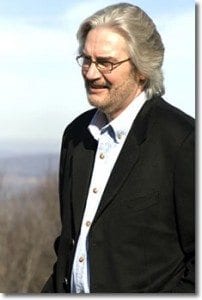 While some Leonard Sweet defenders have argued that Sweet’s hybridized postmodern “New Light” apologetic flies right over the heads of “old light” “fundamentalist” types, the facts tell a much different story. What I learned in reading Quantum Spirituality is that Sweet is in the process of trying to transform biblical Christianity into a quantum/postmodern/New Light/New Age/New Spirituality. Without apology, Sweet writes that he is part of a “New Light movement” and he describes those he especially admires as “New Light leaders.”8
While some Leonard Sweet defenders have argued that Sweet’s hybridized postmodern “New Light” apologetic flies right over the heads of “old light” “fundamentalist” types, the facts tell a much different story. What I learned in reading Quantum Spirituality is that Sweet is in the process of trying to transform biblical Christianity into a quantum/postmodern/New Light/New Age/New Spirituality. Without apology, Sweet writes that he is part of a “New Light movement” and he describes those he especially admires as “New Light leaders.”8
In the “Acknowledgments” of Quantum Spirituality, Sweet expresses his deep gratitude and admiration to various “New Light leaders” that he openly praises as “the most creative religious leaders in America today.”9 Included in his group are a number of New Age leaders I am very familiar with—most particularly Willis Harman, Matthew Fox, and M. Scott Peck. Sweet describes these three men—along with all the others cited—as “extraordinary” and “great” New Light leaders. He goes so far as to say that they are his “personal role models” and “heroes” of the “true nature of the postmodern apologetic.” Sweet writes:
They are my personal role models (in an earlier day one could get away with “heroes”) of the true nature of the postmodern apologetic. More than anyone else, they have been my teachers on how to translate, without compromising content, the gospel into the indigenous context of the postmodern vernacular.10
But many of the men Leonard Sweet acknowledges have compromised the “content” of the Gospel by translating it into the “postmodern vernacular” of a New Age/New Spirituality. For example, Willis Harman, Matthew Fox, and M. Scott Peck have all played leading roles in the building and popularizing of today’s New Age/New Spirituality movement. Therefore, how can these three leaders be Sweet’s “role models” and “heroes”? Sweet’s praise of these men says all you need to know about his “postmodern apologetic.” Rather than commending these New Age/New Light leaders, a self-professing Christian leader like Sweet should be warning the church about them. A brief look at these three “New Light leaders” and their teachings will make this very clear.
Willis Harman
 The late Willis Harman is one of Leonard Sweet’s “personal role models” and “heroes,” yet he is listed as one of the most influential Aquarian/New Age conspirators in the best-selling book The Aquarian Conspiracy, written by New Age proponent Marilyn Ferguson.11 Her book was a 1980 trumpet blast announcing that the coming New Age—the Age of Aquarius—would eventually supplant biblical Christianity with its “heretical” New Age worldview that God is “in” everything. Ferguson writes:
The late Willis Harman is one of Leonard Sweet’s “personal role models” and “heroes,” yet he is listed as one of the most influential Aquarian/New Age conspirators in the best-selling book The Aquarian Conspiracy, written by New Age proponent Marilyn Ferguson.11 Her book was a 1980 trumpet blast announcing that the coming New Age—the Age of Aquarius—would eventually supplant biblical Christianity with its “heretical” New Age worldview that God is “in” everything. Ferguson writes:
Usually at the point of crisis, someone has a great heretical idea. A powerful new insight explains the apparent contradictions. It introduces a new principle . . . a new perspective.12
For Harman’s New Age influence to be identified in Ferguson’s book speaks volumes about Harman. Ferguson believes in a benevolent “Aquarian Conspiracy”—a conspiracy she taught would eventually convert the world and the church to a postmodern New Age worldview.
Willis Harman (1918-1997) was a social scientist/futurist with the Stanford Research Institute where he started a futures research program. Later he was President of the New Age Institute of Noetic Sciences and was well connected to many New Age leaders. Harman was very straightforward regarding his New Age beliefs. He wrote a number of books including Global Mind Change: The New Age Revolution in How We Think. In reviewing Global Mind Change, The San Francisco Chronicle writes:
There never has been a more lucid interpretation of New Age consciousness and what it promises for the future than the works of Willis Harman.13
Yet in Quantum Spirituality, Leonard Sweet is drawn to Harman and his New Age views regarding the “Spiritual Sciences.” Sweet writes:
New Lights must catch the waves of a spiritual Gulf Stream taking them into the unknown regions of what Nobel laureate/philosopher/London School of Economics professor Karl Popper and electrical engineer/Stanford University professor Willis W. Harman call the “Spiritual Sciences.”14
In Global Mind Change, Willis Harman always defines “Spiritual Sciences” in conjunction with the “perennial wisdom” that is the New Age and the occult. Harman states:
The mystery of the creative/intuitive mind is underscored in the “perennial wisdom,” which finds the deep intuition connected to the one Universal Mind. Thus there are indeed no limits to its capabilities save those the individual creates as part of the resistance to discovering one’s godlike qualities.15
Unbelievably, a group of Evangelical leaders in the late 1970s was openly meeting with Willis Harman. These Christian leaders were exploring new and alternative views of the future. Disregarding the prophetic teachings of Scripture, they were looking for a different, more optimistic and hopeful view of the future than the one described in the Bible. Discernment Research Group reports:
These Consultations on the Future represent the first publicly disclosed occasions where Evangelicals and New Agers met together to address common ground. Is it possible that this marked the beginning of the public phase of the integration of Theosophy [New Age/New Spirituality] with Christianity? Why did Evangelical leaders bring . . . [New Age] Theosophist, Willis Harman, to address a 1979 Consultation on the topic of the future—when Scripture plainly teaches that our future blessed hope rests in Jesus Christ and His imminent return?16
In a 1995 journal article I wrote titled “Sign of the Times: Evangelicals and New Agers Together”, I describe how Christian leader Jay Gary was directly involved with the heavily New Age, former Assistant Secretary-General of the United Nations, Robert Muller. I warned that Gary was trying to subtly move the church into New Age teachings—particularly in regard to creating an alternative view of the future.17 I had no idea then that Evangelical leaders had already met with New Age leaders in 1979 to try to find common ground and that these leaders were willing to disregard and manipulate the teachings of the Bible to create a different New Age view of the future. The beguiling illusion of “peace and safety” referred to in the Bible (1 Thessalonians 5:3) was obviously more attractive than the truth of biblical prophecy. Deceived Evangelical leaders like Leonard Sweet apparently felt they could gain more understanding from New Age leaders like Willis Harman than they could from a proper understanding of the Bible prophecy that Rick Warren and Brian McLaren were stating was none of our business.
Willis Harman’s writings are greatly respected by a wide range of New Age leaders that includes veteran leader David Spangler. In his book, Emergence: The Rebirth of the Sacred, Spangler recommends Willis Harman’s book An Incomplete Guide to the Future. He writes:
This image of the new age is the one most popularly presented to the public, in books such as Willis Harman’s An Incomplete Guide to the Future, Marilyn Ferguson’s The Aquarian Conspiracy, and physicist Fritjof Capra’s The Turning Point.18
Spangler also points out that Willis Harman was one of the leaders who helped to define how the New Age is emerging with “an increasingly clear set of ideas and values” that are defining a “new paradigm.”19 Yet in spite of Harman’s well-publicized New Age credentials, Leonard Sweet praises Harman as his “role-model” and “hero.”
Matthew Fox
Another one of Leonard Sweet’s “personal role models” and “heroes” is Episcopalian priest Matthew Fox. Fox is a former Catholic priest who was excommunicated from the Catholic Church for openly professing the heretical teachings of Jesuit priest Pierre Teilhard de Chardin (and other New Age teachers). Chardin (1881-1955), who is frequently referred to as “the father of the New Age movement,”20 believed that all of humanity is converging towards a universal New Age Christ in the future—an “Omega Point” that will forever change and redefine mankind.
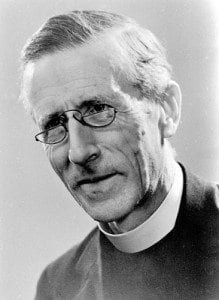 Matthew Fox, like his mentor Chardin, taught that all creation is the “Cosmic Christ”—therefore the Cosmic Christ is in everyone and everything. In his book The Coming of the Cosmic Christ, Fox writes:
Matthew Fox, like his mentor Chardin, taught that all creation is the “Cosmic Christ”—therefore the Cosmic Christ is in everyone and everything. In his book The Coming of the Cosmic Christ, Fox writes:
We are all royal persons, creative, godly, divine, persons of beauty and of grace. We are all Cosmic Christs, “other Christs.” But what good is this if we do not know it?21
Divinity is found in all creatures. The divine name from Exodus 3:14, “I Am who I Am,” is appropriated by Jesus who shows us how to embrace our own divinity. The Cosmic Christ is the “I am” in every creature. The divine mystery and miracle of existence is laid bare in the unique existence of each atom, each galaxy, each tree, bird, fish, dog, flower, star, rock, and human. Meister Eckhart says that “in this breakthrough I discover that God and I are one.22
Matthew Fox, in what he describes as “creation-centered spirituality,” emphasizes that the Creator is “in” all “creation.” Reflecting the all-embracing New Age philosophy of Pierre Teilhard de Chardin, Fox credits Chardin as one of the “key”23 spokespersons for his creation-centered spirituality. In Quantum Spirituality, Leonard Sweet not only hails Matthew Fox as one of his spiritual “heroes,” but he also describes Pierre Teilhard de Chardin—as “Twentieth-century Christianity’s major voice.”24 Chardin’s writings have never been officially recognized by the Catholic Church, but they have become increasingly popular over the years—not only with New Agers but also with many Catholics and Catholic leaders.
Matthew Fox continues in the Chardin tradition. To his followers, Fox resembles the heroic, renegade priests in James Redfield’s 1995 New Age best-seller, The Celestine Prophecy—the priests who dared to start a revolution by confronting the “Old Age” biblical theology with their New Age/New Spirituality insights. Like Chardin, Fox teaches original blessing rather than original sin and that Christ is panentheistic—a Cosmic Christ who is totally embedded in his creation. Fox quotes Pierre Teilhard de Chardin as saying that Christ is in even “the tiniest atom.”25
Pierre Teilhard de Chardin Co Conspirator in Piltdown Fraud
In his 1988 book The Coming of the Cosmic Christ, Matthew Fox echoes Chardin’s complaint that most people aren’t interested in the concept of a “Cosmic Christ” that is “in” everything.26 Today, however, it is a much different story as Fox and Chardin and their “Cosmic Christ” are being embraced by countless numbers of people, like Leonard Sweet, who describe themselves as Evangelical believers. In fact, Sweet betrays his own emerging New Age worldview by incorporating Fox’s “Cosmic Christ” into his own book, Quantum Spirituality. Echoing Chardin, Fox, and many other New Age teachers today, Sweet writes:
The world of nature has an identity and purpose apart from human benefit. But we constitute together a cosmic body of Christ [panentheism].27
 Leonard Sweet actually credits Matthew Fox in a footnote for inspiring Sweet’s own description of the “cosmic body of Christ”28 and refers readers to Fox’s book The Coming of the Cosmic Christ for more information on the subject.
Leonard Sweet actually credits Matthew Fox in a footnote for inspiring Sweet’s own description of the “cosmic body of Christ”28 and refers readers to Fox’s book The Coming of the Cosmic Christ for more information on the subject.
In furthering his creation spirituality belief, Sweet writes:
In an ecological model of the church, the earth is not separate from us; indeed, we are in symbiotic relationship with the earth. Creation spirituality is of tremendous help here in weaning us from this homocentric warp.29
Leonard Sweet again credits Matthew Fox in a footnote that refers readers to more books written by Fox and by others regarding his Creation Spirituality Series:
Books on creation spirituality include Matthew Fox, Original Blessing: A Primer in Creation Spirituality Presented in Four Parts, Twenty-six Themes, and Two Questions . . . Fox, Creation Spirituality: Liberating Gifts for the Peoples of the Earth . . . See also other volumes in the Creation Spirituality Series published by Bear and Company.30
Sweet then tries to differentiate what he is saying about creation spirituality from New Age pantheism (God “is” everything). To do so he presents Pierre Teilhard de Chardin and Matthew Fox’s panentheism31 (God is “in” everything). But Sweet doesn’t explain that any kind of panentheism is still a distinctly heretical New Age teaching. Sweet crosses this panentheistic bridge into the New Age/New Spirituality right after his statement about the “cosmic body of Christ” and his footnotes to Matthew Fox. With characteristic assurance, Sweet lays bare his postmodern/quantum/New Age/New Spirituality “apologetic” by writing:
Quantum spirituality bonds us to all creation as well as to other members of the human family. New Light pastors are what Arthur Peacocke calls “priests of creation”—earth ministers who can relate the realm of nature to God, who can help nurture a brother-sister relationship with the living organism called Planet Earth. This entails a radical doctrine of embodiment of God in the very substance of creation. The Oxford Dictionary of the Christian Church (1974) identifies the difference between pantheism and pan-entheism: Pantheism is “the belief or theory that God and the universe are identical”; panentheism is “the belief that the Being of God includes and penetrates the whole universe, so that every part of it exists in Him, but . . . that His Being is more than, and is not exhausted by, the Universe.” New Light spirituality does more than settle for the created order, as many forms of New Age pantheism do. But a spirituality that is not in some way entheistic (whether pan- or trans-), that does not extend to the spirit-matter of the cosmos, is not Christian. A quantum spirituality can in no way define God out of existence.32 (emphasis added)
This panentheistic God “in” everything teaching by Leonard Sweet is the foundational teaching of the New Age/New Spirituality. But Sweet’s emerging panentheistic New Spirituality agrees not only with the New Age but also with a Rick Warren statement in The Purpose Driven Life. As previously described, Warren uses a new, flawed translation of Ephesians 4:6 to present this same panentheistic/New Age teaching that God is “in” everything. Regarding God, Warren writes that the Bible says:
He rules everything and is everywhere and is in everything.33 (New Century Version)
Because Rick Warren has never removed this improper translation from The Purpose Driven Life, he and Leonard Sweet appear to be on the same panentheistic/New Age page. The New Age implications of their writings relate directly to the following statement made by Pierre Teilhard de Chardin:
What I am proposing to do is to narrow that gap between pantheism and Christianity by bringing out what one might call the Christian soul of pantheism or the pantheist aspect of Christianity.34
In 2006, Matthew Fox published a book titled A New Reformation: Christian Spirituality and the Transformation of Christianity. Panentheism—God “in” everything—is the rallying cry for the New Age/New Reformation of Christianity that Matthew Fox and other New Age leaders are calling for. It is most significant that Leonard Sweet, Robert Schuller, Rick Warren, Brian McLaren, Erwin McManus, and other leading church figures are also calling for a New Reformation and transformation of Christianity as we know it. And while Warren has stated that his New Reformation is based on “deeds” not “creeds,”35 the whole idea of a proposed New Reformation can be traced directly back to Schuller. In 1982, Schuller called for a New Reformation in his book Self-Esteem: The New Reformation. In 2003, Schuller further defined his New Reformation in panentheistic terms when he said that God was not only transcendent but “immanent.” He stated, “Yes, God is alive and He is in every single human being!”36 Meanwhile Warren has also been calling for a New Reformation37 while citing a new version of the Bible that states that God is “in” everything.
M. Scott Peck
M. Scott Peck (1936-2005), the late psychiatrist and best-selling author of The Road Less Traveled, is another one of the “role models” and “heroes” that Leonard Sweet cites in his book Quantum Spirituality. The Road Less Traveled was on the New York Times Best Seller list for over ten years. In a sub-section of The Road Less Traveled titled “The Evolution of Consciousness,” Peck describes God as being “intimately associated with us—so intimately that He is part of us.”38 He writes:
If you want to know the closest place to look for grace, it is within yourself. If you desire wisdom greater than your own, you can find it inside you. . . . To put it plainly, our unconscious is God. God within us. We were part of God all the time.39
In a later book titled The Different Drum, M. Scott Peck makes it clear that while he saw himself as a “Christian,” he believes that the salvation of the world lies in community—not so much in accepting and following Jesus Christ as one’s Lord and Savior. He writes:
In and through community lies the salvation of the world.
Nothing is more important.
[T]he human race today stands at the brink of self-annihilation. . . . I’m scared for my own skin. I’m even more scared for the skin of my children. And I’m scared for your skins. I want to save my skin. I need you, and you me, for salvation. We must come into community with each other. We need each other.40
But he then adds that certain rules will have to be changed:
It is not impractical to consider seriously changing the rules of the game when the game is clearly killing you.41
Peck goes on to say that this changing of rules will also apply to the Christian church. Speaking to the church, he writes:
If humankind is to survive, the matter of changing the rules is not optional.42
Of course, this is exactly what Jesus did not do—nor did His disciples. They died living by God’s Word and God’s rules rather than trying to change those rules to save their own “skin.” In a 1995 journal article titled “M. Scott Peck: Community and the Cosmic Christ,” I explain:
What Peck was advocating had serious implications for Christians who dared to put their Lord before the god of community. In language reminiscent of Alice Bailey, Peck emphatically states that “community is and must be inclusive. The great enemy of community is exclusivity. Groups that exclude others because they are poor or doubters or divorced or sinners or of some different race or nationality are not communities; they are cliques—actually defensive bastions against community.”
What Peck seemed to be saying was, that to survive in the world we must be accommodating enough to form a world community in the interests of peace. Peck’s definition of “Christian community” gives us an idea of just how accommodating the Christian faith ultimately will be. In his eyes everyone is a potential member of a “world” Christian community, no matter what their expressed faith might be. He says, “ . . . any group of people (no matter what their religious persuasion or whether the word “Jesus” is ever spoken) who are willing to practice the love, discipline, and sacrifice that are required for the spirit of community, that Jesus extolled and exemplified, will be gathered together in his name and he will be there.43
Leonard Sweet describes himself as an Evangelical Christian, and yet at the same time has described M. Scott Peck as one of his “heroes?” The panentheistic New Age M. Scott Peck who said that God is within us and that we are part of God? A man who was willing to capitulate to the world rather than holding fast to biblical truth and to Jesus Christ as His Lord and Savior? Someone who would change the rules to save his own “skin”? Yet true heroes of the Christian faith uphold the Gospel in tough times—they don’t abandon it. They have always been willing to die for what they believe, rather than change the rules to save their own “skin.”
M. Scott Peck and Matthew Fox Together
When Matthew Fox’s The Coming of the Cosmic Christ was published in 1988—just two years after the release of M. Scott Peck’s The Different Drum—the lead endorsement on the back cover of Fox’s book was written by Peck. Peck writes:
Fox’s most daring, pioneering work yet, stimulating us to the kind of resurrection of values and practice required for planetary salvation.44
M. Scott Peck and Matthew Fox were obviously in New Age agreement. Peck, like Matthew Fox and Leonard Sweet, describes Pierre Teilhard de Chardin in glowing terms. Where Sweet describes Chardin as “Twentieth-century Christianity’s major voice,” Peck similarly describes Chardin as being perhaps “the greatest prophet of the evolutionary leap” to a New Paradigm—the supposed quantum leap that is moving mankind toward mystical, global consciousness and world community. Peck writes:
The number of people entering the mystical stage of development and transcending ordinary culture seems to have increased a thousandfold in the course of a mere generation or two . . . one wonders if the explosion in their numbers might represent a giant leap forward in the evolution of the human race, a leap toward not only mystical but global consciousness and world community. . . .
Perhaps the greatest prophet of this leap was Teilhard de Chardin.45
The Mystical Christ of The New Age
And it is the mystical “Christ” of Willis Harman, Matthew Fox, M. Scott Peck, Pierre Teilhard de Chardin, and the New Age that challenges biblical Christianity today. Leonard Sweet reveals his New Age sympathies when he refers to Harman, Fox, and Peck as “extraordinary” New Light leaders. He further reveals his New Age affections when he describes Chardin as “Twentieth-century Christianity’s major voice.”46 However, Chardin was not the major voice for twentieth-century Christianity, but he was the major voice for the New Age/New Spirituality that was seeking to re-form and overturn biblical Christianity. The following quotes from Chardin underscore his New Age worldview and belief in a universal New Age Christ. He writes:
[T]he Cross still stands. . . .
But this is on one condition, and one only: that it expand itself to the dimensions of a new age, and cease to present itself to us as primarily (or even exclusively) the sign of a victory over sin.47
A general convergence of religions upon a universal Christ who fundamentally satisfies them all: that seems to me the only possible conversion of the world, and the only form in which a religion of the future can be conceived.48
I believe that the Messiah whom we await, whom we all without any doubt await, is the universal Christ; that is to say, the Christ of evolution.49
Christ is in the Church in the same way as the sun is before our eyes. We see the same sun as our fathers saw, and yet we understand it in a much more magnificant way.50
It is no coincidence that New Age leader and popular Chicken Soup for the Soul co-author Jack Canfield uses a Pierre Teilhard de Chardin quote to preface the first story in his first Chicken Soup for the Soul book in 1993.51 That Chardin quote is the same quote used by Bernie Siegel in his 1987 book Love, Medicine & Miracles 52 and by other New Age leaders like Marianne Williamson.53 In Robert Schuller’s 2005 book Don’t Throw Away Tomorrow: Living God’s Dream For Your Life, Schuller describes Pierre Teilhard de Chardin as “one of the most respected philosopher-theologians.”54 With both Leonard Sweet and Robert Schuller hailing the late New Age Chardin as a highly respected Christian voice, it is not surprising that Leonard Sweet has been a featured speaker at Schuller’s Crystal Cathedral. Even given all of this, Sweet took his New Age involvement a step further. He actually sought the counsel of David Spangler, one of the most pronounced New Age leaders of our time.
About Warren B Smith
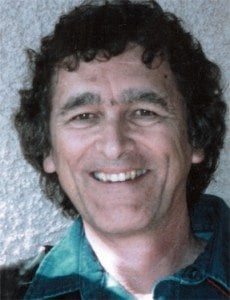 Warren Smith Articles is the publishing arm of Warren B. Smith’s ministry. Warren has a B.A. from the University of Pennsylvania and a M.S.W. from Tulane University. He is a free-lance writer and community social worker who was formerly involved in the New Age movement.
Warren Smith Articles is the publishing arm of Warren B. Smith’s ministry. Warren has a B.A. from the University of Pennsylvania and a M.S.W. from Tulane University. He is a free-lance writer and community social worker who was formerly involved in the New Age movement.
Warren has served as a program coordinator for people with special needs, directed several homeless programs, and has worked as a Hospice social worker in New Orleans and on the California coast. Warren has written extensively on the subject of spiritual deception and has spoken on radio, television, and at numerous seminars and conferences. His books include The Light That Was Dark: From the New Age to Amazing Grace, Deceived on Purpose: The New Age Implications of the Purpose-Driven Church, and A “Wonderful” Deception: The Further New Age Implications of the Emerging Purpose Driven Movement. His most recent book, False Christ Coming: Does Anybody Care?: What New Age Leaders Really Have in Store for America, the Church and the World was released in February 2011. Warren resides in Northern California with his wife Joy.
For more excellent resources on the New Age Spirituality flooding the Church see Warrens site.
Connect with Amos37
Stay up to date with Amos37.com eMail update (Weekly)
Endnotes:
1. Leonard Sweet, Quantum Spirituality: A Postmodern Apologetic (Dayton, OH: Whaleprints for SpiritVenture Ministries, Inc. 1991, 1994), p. 125.
2. Rick Warren and Leonard Sweet, The Tides of Change<, op. cit, introductory information sheet.
3. Ibid.
4. Tony Jones, The New Christianity, op. cit., pp. 2, 40; Brian McLaren, Everything Must Change, op. cit., p. 296; Leonard Sweet, Quantum Spirituality, op. cit., p. viii.
5. Rick Warren and Leonard Sweet, The Tides of Change, op. cit.
6. Faith Forward conference in 2007 at Crystal Cathedral with Leonard Sweet, http://www.cathedralgifts.com/20fafoco.html.
7. For information on the small-group workshop at the 2008 Saddleback Small Groups conference: http://www.lighthousetrailsresearch.com/blog/index.php?p=988&more=1&c=1.
8. Leonard Sweet, Quantum Spirituality, op. cit., p. viii.
9. Ibid., p. ix.
10. Ibid., p. viii.
11. Marilyn Ferguson, The Aquarian Conspiracy: Personal and Social Transformation in the 1970s (Los Angeles, CA: J. P. Tarcher, Inc. 1980), p. 420.
12. Ibid., p. 27.
13. Willis Harman, PH.D, Global Mind Change: The New Age Revolution In The Way We Think (New York, NY: Warner Books, 1988), front cover.
14. Leonard Sweet, Quantum Spirituality, op. cit., p. 218.
15. Willis Harman, Global Mind Change, op. cit., p. 88.
16. Unpublished paper containing quotes from several posts at http://herescope.blogspot.com, used with permission.
17. Warren B. Smith, “Sign of the Times: Evangelicals and New Agers Together” (SCP Journal, 1995); posted at http://www.erwm.com/EvangelicalsandNewAgers.htm.
18. David Spangler, Emergence: The Rebirth of the Sacred (New York, NY: Dell Publishing Co., Inc., 1984), p. 80.
19. Ibid., pp. 90-91.
20. Mike Oppenheimer, “A NEW Anointing-Pentecost” (Let Us Reason Ministries, http://www.letusreason.org/Current66.htm).
21. Matthew Fox, The Coming of the Cosmic Christ: The Healing of Mother Earth and the Birth of a Global Renaissance (San Francisco, CA: Harper & Row Publishers, 1988), p. 137.
22. Ibid., p. 154.
23. Matthew Fox, Original Blessing: A Primer in Creation Spirituality Presented in Four Parts, Twenty-six Themes and Two Questions (New York, NY: Jeremy P. Tarcher/Putnam, First Jeremy P. Tarcher/Putnam Edition, 2000), p. 316.
24. Leonard Sweet, Quantum Spirituality, op. cit., p. 106.
25. Matthew Fox, The Coming of the Cosmic Christ, op. cit., p. 129.
26. Ibid., p. 77.
27. Leonard Sweet, Quantum Spirituality, op. cit., p. 124.
28. Ibid., p. 324.
29. Ibid., p. 124.
30. Ibid., p. 324.
31. Ibid., p. 125.
32. Ibid.
33. Rick Warren, The Purpose Driven Life, op. cit, p. 88.
34. Pierre Teilhard de Chardin, Christianity and Evolution (New York, NY: Harcourt Brace Jovanovich, Inc., 1971), p. 56.
35. One example of where Rick Warren says this is at the Pew Forum of Religion on May 23, 2005, “Myths of the Modern Megachurch,” http://pewforum.org/events/index.php?EventID=80. Rick Warren: “You know, 500 years ago, the first Reformation with Luther and then Calvin, was about beliefs. I think a new reformation is going to be about behavior. The first Reformation was about creeds; I think this one will be about deeds. I think the first one was about what the church believes; I think this one will be about what the church does.”
36. Robert H. Schuller, Hour of Power, “God’s Word: Rebuild, Renew, Restore,” op. cit.
37. “Myths of the Modern Megachurch,” Pew Forum on Religion, op. cit.
38. M. Scott Peck, The Road Less Traveled (New York, NY: Simon & Schuster, 1978), p. 281.
39. Ibid.
40. M. Scott Peck, The Different Drum (New York, NY: Simon & Schuster, First Touchstone Edition, 1988), p. 17.
41. Ibid., p. 18.
42. Ibid., pp. 18-19.
43. Warren B. Smith, “M. Scott Peck: Community and the Cosmic Christ” (SCP Journal, 19: 2/3), pp. 27-28.
44. Matthew Fox, The Coming of the Cosmic Christ, citing endorsement by Peck on back cover.
45. M. Scott Peck, The Different Drum, op. cit., pp. 205-206.
46. Leonard Sweet, Quantum Spirituality, op. cit., p. 106.
47. Teilhard de Chardin, Christianity and Evolution, op. cit., pp. 219-220.
48. Ibid., p. 130.
49. Ibid., p. 95.
50. Leonard Sweet, Aqua Church 2.0: Piloting Your Church into Today’s Fluid Culture (Colorado Springs, CO: David C. Cook, 2008), p. 47.
51. Jack Canfield and Mark Victor Hansen, Chicken Soup for the Soul: 101 Stories to Open the Heart and Rekindle the Spirit (Deerfield Beach, FL: Health Communications, Inc., 1993), p. 1.
52. Bernie Siegel, Love, Medicine & Miracles, op. cit., p. 186.
53. Marianne Williamson, “A New Movement for Peace,” speech given April 7, 2002 at the Toledo, Ohio Peace and Justice Conference.
54. Robert H. Schuller, Don’t Throw Away Tomorrow: Living God’s Dream for Your Life, op. cit., p. 183.






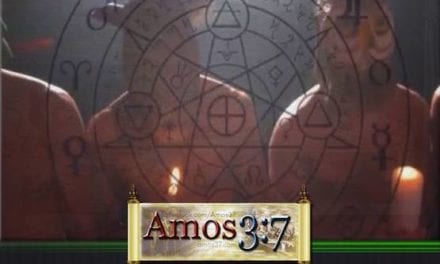










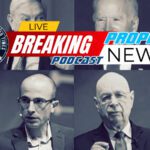

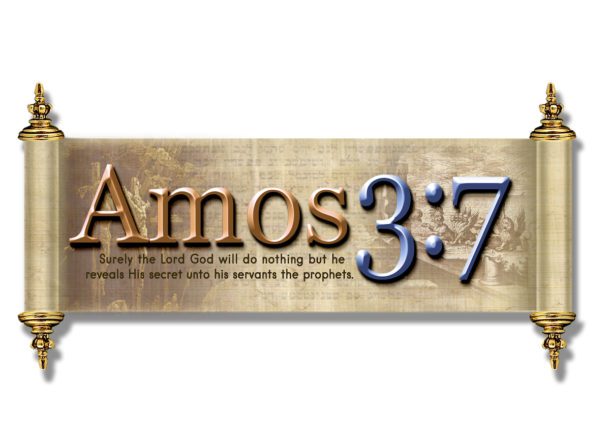

Excellent expose on what is really one of the most odious examples of outright occultism being snuck into the church under the guise of “new Christianity”. I was rather shocked myself when I first read Quantum Christianity, where he praises things like “kundalini energy” and “navigating the fourth dimension”, etc. Anyone who is familiar with what the true practices of the New Age and occultism are all about should be able to clearly see what sort of belief system that Sweet really holds…